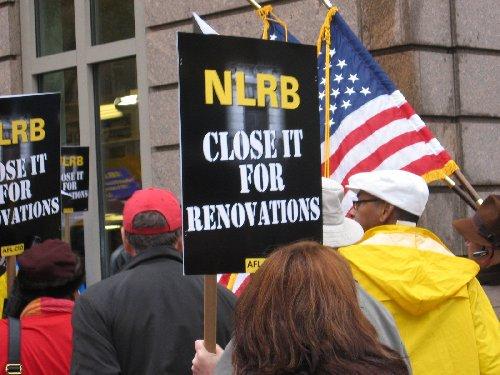 For many HR professionals, fear of union campaigns went out along with black-and-white TVs and pay telephones.
For many HR professionals, fear of union campaigns went out along with black-and-white TVs and pay telephones.
The percentage of workers belonging to a union these days runs at about 11%, down from more than 20% in 1983. And union membership in the private sector has fallen below 7%, a level not seen since 1932.
But a pair of controversial rulings by the National Labor Relations Board (NLRB) last week has pumped new life in labor unions, giving them sweeping new powers to organize workers.
The administration handed down two Christmas gifts to labor: the first ruling cuts in half the number of days it would take to bring a union election to a vote; the second says employees can use company email systems to rallying organizing efforts. Here a quick summary:
PREPARE FOR ‘AMBUSH ELECTIONS.’ Under current rules, an automatic one-month delay follows after the NLRB receives a petition for a union election. But the new final rule (which takes effect April 14) eliminates the one-month pause, clearing the way for so-called “ambush” or “quickie” elections.
Currently, the average time period for union elections is 42 days after the union requests a vote. Once these new rules take effect, most elections will likely be held within 10 to 21 days.
While the NLRB says this will “streamline” elections, critics say voting will happen so quickly that employers stand little chance of persuading employees to reject a union.
“While unions will have months to campaign and sign up employees on authorization cards, an employer will be left with only days to respond and provide employees with their position on the benefit of remaining union free,” says attorney David Rittof, president of Modern Management, Inc., who will speak on the topic at the 2015 Labor and Employment Law Advanced Practices (LEAP) conference in April.
Also, employers will have to provide more contact info to unions, including employees’ personal phone numbers and email addresses.
“Employers will need to be even more vigilant in advance planning and training to respond to any union activity,” says Rittof. “Readiness plans must be drafted and training should be refreshed to be prepared for the likely onslaught of union drives.”
NEW RIGHTS TO EMAIL ORGANIZING. If your organization has a blanket policy that prohibits workers from using the organization’s email for personal matters, it’s time to revise it.
In a 3-2 ruling on Dec. 11, the NLRB said employees have the right to use their employer’s email system (during off-duty time) to engage in legally protected communications, including discussing wages and even organizing a union. The ruling does not prevent employers from monitoring email. (Purple Communications, 21-CA-095151)
The decision overturned a 2007 NLRB ruling (Register Guard) that allowed employers to forbid employees from using company email for union organizing as long as they weren’t permitted to use email for any other nonbusiness purpose.
The decision is a “game changer,” according to the Fisher & Phillips law, and could lead many employers to reconsider whether some employees should have access to company email at all.
Look for the Purple Communications decision to be challenged in the federal appellate courts and possibly even at the U.S. Supreme Court. Among the key issues left unanswered by the NLRB ruling: The ruling said employers can justify a blanket ban on nonwork time use of email only by demonstrating that “special circumstances make the ban necessary to maintain production or discipline.” The NLRB said this would be a “rare case,” but future court rulings will still have to draw the line on what constitutes “special circumstances” sufficient to permit employers to ban nonwork email use.
